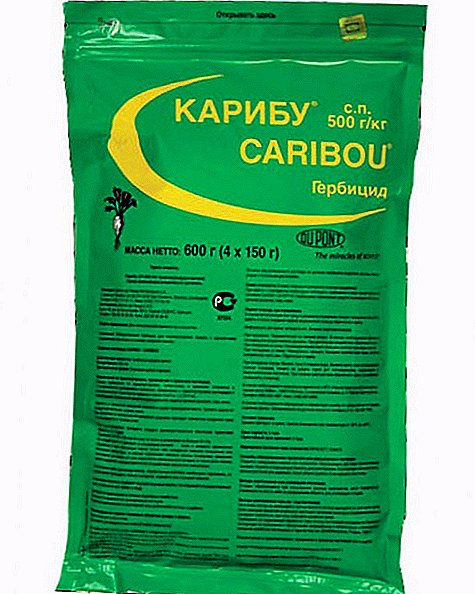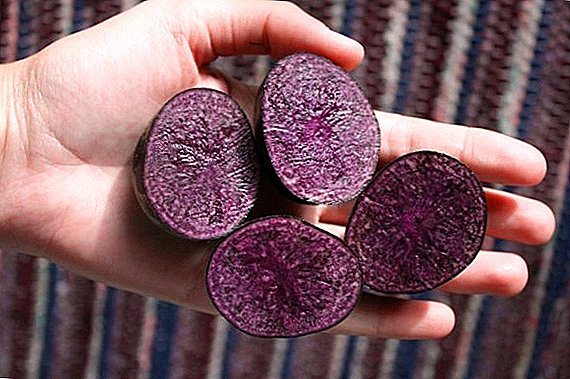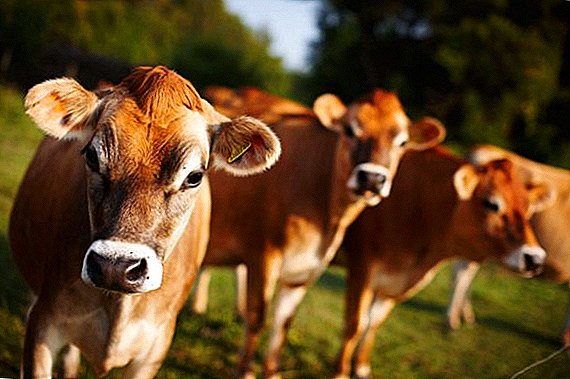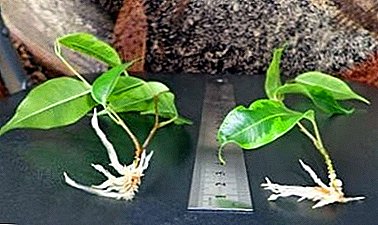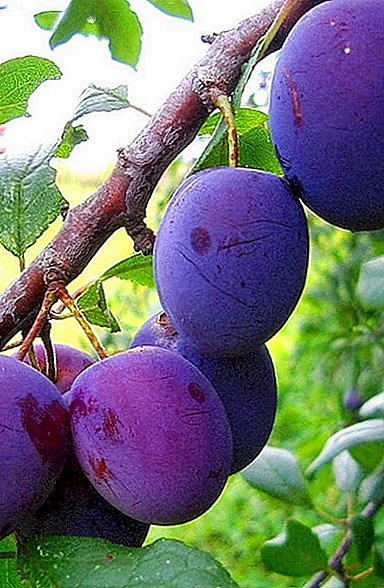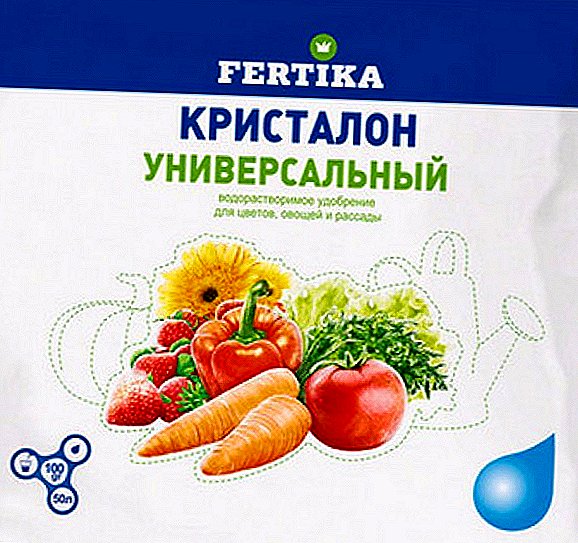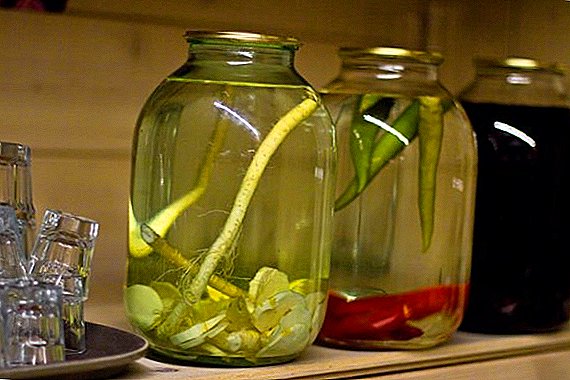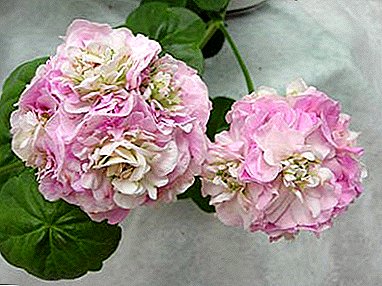
Pelargonium pak Viva is a plant that simply cannot fail to attract the attention of passersby. It fascinates with its appearance literally at first sight. The main advantage of this flower is terry petals.
Another valuable quality of Viva Pelargonium is unpretentious care and long-lasting blooms. Some growers love this plant for compactness. Today we talk about the detailed care of this beauty.
History and botanical description
The main advantage of the variety is its ability to bloom earlyand after that bloom for a long time. For the first time a plant of this variety was presented at an exhibition in Europe. Thanks to this beauty you need Swedish breeders from the nursery of Rokdal. At that event, Viva's pelargonium produced a real sensation, therefore already in 2012 it was brought to a contest in Moscow, where the flower won more than one award.
Features of appearance, description and photos of common species
This type of pelargonium is completely different from its counterparts. It is more similar to terry Asian buttercup or red roses. On one inflorescence can be from 5 to 30 flowers. In diameter, each bud is about 5-6 centimeters.
The buds in each brush do not fit together very tightly, due to which you can easily consider each flower separately. Peduncle grows rather slowly, but this is further justified by a long period of flowering - usually the flowering buds stay on the plant for up to 15 days.
Bush like flower growers for its compactness. Branch away from him often and densely. The sheet plates are very dense, even a little harsh, in hue they are very rich - dark green. With a large amount of light on the leaves of the plant becomes even more and they look more elegant, with the number of foliage grows the number of peduncles.
We offer to get acquainted with the descriptions and photos of the most common varieties of pelargonium Viva.
Caroline

This plant is different petals lilac-white shade. To the touch they are terry, the flowers grow very thickly on the bush. From 3 to 5 single florets are formed on one flower brush. Sheet-like plates are usually dark green, differing in their growth in width. The flowering period is considered long, and the process itself is very abundant.
Madeleine

The variety is distinguished by the correct form of the bush and a long period of budding. The foliage is wide, but we are not talking about large sizes. The color of the leaves is dark green. This variety is considered a zonal variety. The shade of the petals is usually white, but blush appears in the sun.
Rosita

Petals of bright pink hues. The foliage is green but not dark. On one inflorescence about 5-6 buds can form. During the flowering period, the duration of which is about 15 days, the flowers delight in their brightness and pomp.
How to plant?
This process can not be called very difficult. Plant should be planted in the period from November to mid-spring. This is due to the fact that as the flower grows, the light day should also increase.
Soil preparation
Flower growers usually acquire the substrate already prepared. It is necessary to buy only soil with neutral indicators of acidity. However, you can cook it yourself. For this is taken:
- turf;
- peat;
- river sand.
Ratios are observed in terms of 2: 1: 1. All this is good to mix and fill capacity.
- If you plant cuttings, then it should be a small pot.
- If it is necessary to plant only seeds, in this case the wooden box is filled with the mixture.
- After that, the grains are placed at a distance of 5 centimeters from each other and lightly sprinkled with soil.
- Then the soil is moistened, but this should be done only by spraying and only separated water.
- At the end of all procedures, the box is covered with a film, which is opened for ventilation daily.
Lighting and location
Although Pelargoniums usually prefer well-lit areas, Viva belongs to the variety that more like penumbra. To do this, it is better to put a pot with a flower on the west or east side of the room.
It is important to monitor the fact that the ground itself did not overheat. Once warm days have arrived, the plant is best brought to fresh air.
How to care?
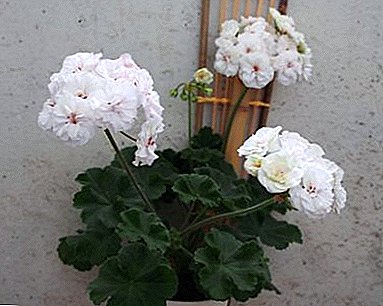 Watering mode. It is not necessary to moisten the soil for pelargonium with particular frequency. It is enough just to ensure that the root system does not dry out. Do not forget about the drainage layer, which will protect the plant from stagnation of water, you can also make holes in the bottom of the pot, so that excess water goes even faster.
Watering mode. It is not necessary to moisten the soil for pelargonium with particular frequency. It is enough just to ensure that the root system does not dry out. Do not forget about the drainage layer, which will protect the plant from stagnation of water, you can also make holes in the bottom of the pot, so that excess water goes even faster.The best way to water is to moisturize through the pan. Thus, the rhizomes will receive the required amount of moisture. Experienced growers are advised to completely abandon irrigation from above, as well as from spraying the leaf plates themselves.
- Temperature. The most optimal temperature for Viva Pelargonium are indicators 20-25 degrees above zero. It will be great if you can carry the plant to fresh air during warm weather. It is necessary to monitor the condition of the plant in winter, especially if it is located near the window. It is better to remove it from the window-sill, since a close proximity to cold glasses may freeze the entire surface of the flower.
- Air humidity. If you want to grow a healthy and abundantly flowering plant, then make sure that the humidity is at an average level - it should be about 60-65%. Do not forget about the constant airing of the room, which protects the flower from the development of diseases and pests. Spraying Viva Pelargonium is not necessary. This should be done only in the hours of very scorching sun, and if the room is very dry air.
- Loosening the substrate. This procedure is simply necessary for the normal cultivation of Viva Pelargonium. Such manipulations help the soil to become more breathable, and excess water in such soil will leave much easier.
- Top dressing. It is necessary to fertilize a plant during the period of active growing season - from the beginning of spring to the middle of autumn. It is best to buy ready-made complexes in specialized stores. Make sure that the fertilizer contains nitrogen, potassium, and phosphorus in equal quantities. Otherwise, either flowering or an increase in green mass will prevail. Feed application mode - twice a month. In winter, the plant does not fertilize at all.
- Care in the winter. This is not to say that it is very different from the usual. However, there are some nuances. The flower pot with a flower needs to be rearranged to a darker place, the temperature should be reduced to +15 degrees. At this temperature and moderate watering, the plant may not fall during the wintering period. To moisturize the soil much less often - it will be enough once every two weeks.
Diseases and pests
 Usually this process occurs due to improper care. Most often on Viva Pelargonium you can notice such ailments:
Usually this process occurs due to improper care. Most often on Viva Pelargonium you can notice such ailments:
- Puchchinia fungus. Different red pigmentation on any part of the plant. As soon as a lot of spots appear, the affected parts disappear, and the whole plant begins to dry. Help to fight a similar disease fungicides.
- Blackleg. You can recognize the characteristic blackening at the base of the shoot, the cause of which becomes a fungal infection. It is also treated with the help of fungicides, it is necessary to begin resuscitation actions as early as possible so that the disease does not spread further in the plant.
- Gray rot. This disease can be recognized by a characteristic patina. The cause of the appearance is cool and damp air. It is treated by changing the growing conditions - ensuring good ventilation and increasing air temperature.
- Nematode. Such a disease affects the root system, which causes the entire plant to die. There is no way to treat this disease, so if you find nematodes with pelargonium, you will have to say goodbye.
- Puffiness of foliage. It manifests itself in the form of small growths on the leaf plates. Developed due to lack of lighting and too abundant soil moisture. To get rid of puffiness, it is worth changing the soil or just dry it well. Drainage layer is better to put a new one.
The following parasites can attack Viva Pelargonium:
- Aphid.
- Caterpillars
- Whitefly.
- Termites.
Get rid of pests by using drugs that have proven to be the most effective.
Let's call them:
- Marathon;
- Aspirin;
- Monterey;
- Messenger.
Breeding features
The most suitable method of reproduction in the home is grafting. Stalk can be obtained from an existing adult plant. (for this we pinch off a young shoot), but you can buy it in a flower shop. Usually planted process in early spring or in the middle of autumn.
Reference! After planting, it is impossible to overfill a young plant, as it may die.
Care planted cutting is the same as for an adult plant. It is possible to additionally process a growth sprout before planting.
Viva Pelargonium is an amazing plant that can surprise with its decorative effect even with the slightest efforts of a grower. But if the florist makes the maximum time and effort, the plant will not keep waiting for gratitude.


 Watering mode. It is not necessary to moisten the soil for pelargonium with particular frequency. It is enough just to ensure that the root system does not dry out. Do not forget about the drainage layer, which will protect the plant from stagnation of water, you can also make holes in the bottom of the pot, so that excess water goes even faster.
Watering mode. It is not necessary to moisten the soil for pelargonium with particular frequency. It is enough just to ensure that the root system does not dry out. Do not forget about the drainage layer, which will protect the plant from stagnation of water, you can also make holes in the bottom of the pot, so that excess water goes even faster.